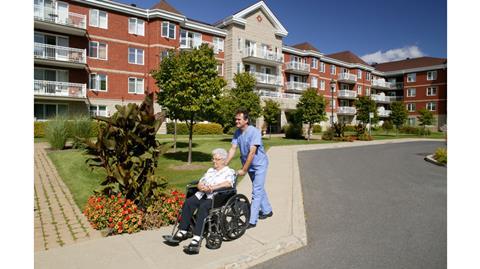Alternative real estate assets accounted for 37% of year-to-date investment in the UK, making them the most actively traded property types, according to new quarterly research published by Cushman & Wakefield on Thursday.

All other property types have seen their share of the investment pie decrease in 2019, with the share of offices now at 33%.
Greg Mansell, head of UK Research & Insight at Cushman & Wakefield, said: 'This collection of specialist real estate, infrastructure and long-income deals has steadily grown its share of the investment market since the Global Financial Crisis. In the last few years, we have seen this trend accelerate as retail and office performance has weakened and we expect the appeal of alternatives to continue.'
Alternative asset classes range from hotels, senior housing and nursing homes to student housing, apartments, data centres and car parks.
Jason Winfield, head of UK & Ireland Capital Markets at Cushman & Wakefield, commented: 'Investors like alternatives for different reasons. For some, the abundance of long leases is the appeal. For others, the high returns associated with operational responsibility is the draw. Tellingly, investors are willing to invest at scale when they find the right opportunity irrespective of the property type.'
While the alternatives sector is buoyant, total UK commercial real estate volumes amounted to £12 bn (€13 bn) in Q2 2019, down 23% year-on-year. Cushman & Wakefield is forecasting £46 bn of total investment volumes by year-end.
'The decline in overall investment volumes is in part due to institutions decreasing their activity,' Winfield noted. 'A slowing UK economy and a fast-approaching Brexit deadline has made those already heavily invested in the UK more cautious. That said, private equity investors have been increasingly active as both buyers and sellers. As buyers, they had a 28% share of all investment in the second quarter – their largest share since 2008.'
The three largest deals this quarter accounted for a third of all investment, the highest share since 2013, demonstrating the enduring appetite for big deals, C&W said.
The main sources of foreign capital are also changing. Top investors from the US, China and Hong Kong have either been net sellers or absent from the market in 2019. In their absence, other investors have entered the fray.
Persistent buying by French investors (£4 bn) over the last 12 months has launched the country back into the top 10 rankings for net investment into the UK since 2006. Investors from South Korea (£0.9 bn) and Israel (£1 bn) have also been buying in large volumes. Both countries are now top 20 net investors into the UK, displacing traditional European sources like the Netherlands.










